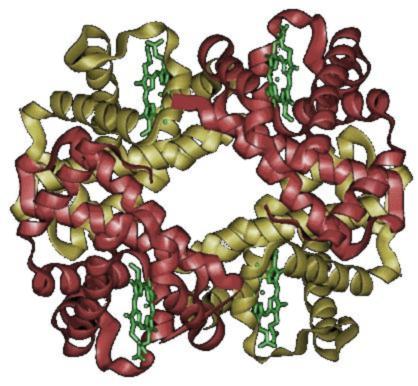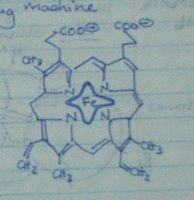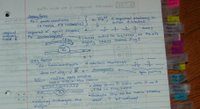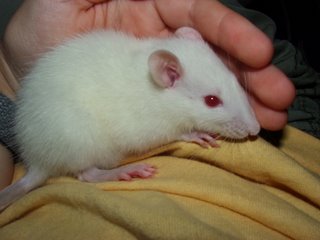On October 5th there is a protest called "The World Can't Wait". In Boston, it will happen on the Boston Common at noon.
If you were disappointed to read in the New York Times last week that the Iraq war is costing approximately $1 billion per week, or that we have spent nearly $330 billion already... think about going.
If you were embarassed to hear President Bush say that "the stability we thought we saw in the Middle East was a mirage"... think about going.
If you were disappointed yesterday to read that wiretaps in the US no longer require a warrant... think about going.
If you were horrified to read that the Senate passed a bill that disallows terror suspects the right of Habeus Corpus... think about going.
This protest is run, in part, by the American Communists. Is that scary? You decide - maybe you hate communists. But here's what I think: I think that waiting to find an organization who exactly represents your beliefs before you act is dangerous. It's unlikely to happen, and I believe in the name of this protest - the world can't wait any longer for change. Just because you attend a protest or event associated with a particular party doesn't make you a member.
I'm not sure what I'll think about the protest. In general I'm afraid of crowd mentality and I don't do well in large groups. But I think it's worth it to go. It's worth it to put yourself in to an uncomfortable situation in order to catalyze change.
A lot of people critizise the American left for knowing who they are against (Bush!) but not knowing what they are for. In many cases I find this to be a valid criticism - sometimes it's just not useful to complain unless you an offer a better alternative.
But in some cases, when your government is torturing prisoners or slowly removing the rights of its own people, there's no time to sit tight and think. We can't wait until we know exactly what will happen next.
This has to stop.
Sep 30, 2006
Sep 19, 2006
Sep 18, 2006
semiconductors!
My explanation of semiconductors got much longer and more involved than I thought it would. I moved it here: http://web.mit.edu/lissa1/Public/semiconductors.htm
At the moment I'm having problems with the images I wanted to put in the document, so it might be frustrating to read at the moment. I'll have it fixed soon.
At the moment I'm having problems with the images I wanted to put in the document, so it might be frustrating to read at the moment. I'll have it fixed soon.
Sep 16, 2006
Sep 13, 2006
the imcomparable awesomeness of hemoglobin

Folks, meet hemoglobin. Hemoglobin is a tetrameric protein. That means it's made out of 4 subunits. In this case, its subunits are called alpha, alpha, beta and beta. The two alphas and the two betas are identical.

Hemoglobin is reponsible for carrying the oxygen you breathe in to the cells throughout your body, via your bloodstream, so that your cells can carry out respiration and you can stay alive. How it accomplishes this task is.... wicked awesome.
 Here's another very important part of hemoglobin. It's called a "heme group", and although it's not a protein itself, one lies in the middle of each subunit. That means there are 4 heme groups per protein.
Here's another very important part of hemoglobin. It's called a "heme group", and although it's not a protein itself, one lies in the middle of each subunit. That means there are 4 heme groups per protein.The most special part about the heme group is the middle. There's a space there for 1 single iron atom to bind. You can see it in the picture. (Iron = Fe.) This iron atom is the critical, important part of the whole entire protein. You'll see why.
So, let's follow the path of an oxygen molecule. It gets breathed in, and it's hanging out in the alveoli, which are the little sacs at the very end of all the crazy trees that make up your lungs. Then hemoglobin comes swishing by in a capillary that goes by the alveoli. The oxygen molecule diffuses through the wall of the alveoli (don't worry right now about how that works), and it binds to the iron atom sitting in the middle of the heme group. That's the important part.
 Normally, iron atoms, unbound (Fe2+), have a certain size. They're pretty big. (If you want more details, it's because there are 4 unpaired electrons in the outer d orbitals of the atom. All of these atoms have the same spin, and that makes the atom paramagnetic.) What you need to know is that the iron atom is SO big, it doesn't quite fit in to the hole in the middle of the heme. It sticks out the top.
Normally, iron atoms, unbound (Fe2+), have a certain size. They're pretty big. (If you want more details, it's because there are 4 unpaired electrons in the outer d orbitals of the atom. All of these atoms have the same spin, and that makes the atom paramagnetic.) What you need to know is that the iron atom is SO big, it doesn't quite fit in to the hole in the middle of the heme. It sticks out the top. But when the iron atom binds the oxygen molecule you breathed in, it becomes smaller. (This is because the electrons reorganize in the d orbitals, and the spins now cancel each other out, and the atom becomes diamagnetic. Incidentally, this rearrangement from high energy orbitals to lower ones causes the red color of iron and blood.) Now, the iron atom fits in the hole in the middle of the heme *perfectly*.
Why does this matter? Because when the atom shrinks down, a particular part of the hemoglobin protein that sits next to it gets pulled down too. (It's Histadine 8 on the F chain, by the way.) Although it may not seem like pulling one small arm of a very large protein would make any difference it does!!
 In fact, it makes a very large difference. It causes the subunits of hemoglobin to change positions with respect to each other. The subunits kind of look like dumbells, and they rotate 15 degrees from a nice even X shape (like the crossbones on a pirate flag) to an uneven X. (This change in shape happens when 8 hydrogen bonds and some salt bridges are broken.)
In fact, it makes a very large difference. It causes the subunits of hemoglobin to change positions with respect to each other. The subunits kind of look like dumbells, and they rotate 15 degrees from a nice even X shape (like the crossbones on a pirate flag) to an uneven X. (This change in shape happens when 8 hydrogen bonds and some salt bridges are broken.)So the protein is a slightly different shape. Why do we care?
Now, this is the COOLEST part. The pressure of oxygen in your lungs is about 100 mmHg. The pressure of oxygen in your body tissues is about 30 mmHg. If you don't know about mmHg, it doesn't matter. All you need to know is that there's more oxygen in your lungs than in your tissues. Naturally, right? Remember, you just breathed in.
In the 100 mmHg areas in your lungs, it just so happens that the oxygen-bound/small-atom/uneven-X form of hemoglobin is quite stable. That's good! That means that when hemoglobin is around high concentrations of oxygen, it wants to bind it. (This is because molecules always end up in the most stable state possible.)
But hemoglobin is special, because it's sensitive to the difference between 100 mmHg and 30 mmHg. At 30 mmHg, the stability I described is no longer the case. In fact, it's more stable NOT being bound to oxygen. So the oxygen is going to fall off. This is absolutely essential. It means that when the hemoglobin shows up in your tissues in your body, where you have low oxygen pressure, the oxygen falls off. Hooray! Now your cells can use it.
Sep 11, 2006
disparate thoughts on a strange day
 What am I doing posting a picture of a spider web on 9.11?
What am I doing posting a picture of a spider web on 9.11?I'm not sure, either.
But I don't think it's an accident.
I don't like the thought of churning out images of a Connected Mother Earth, where each poor little spider has a Profound Influence on all of us... no, that's not where I'm going. Let's be honest: this spider has very little influence.
I think it's more sobering. 2 generations ago, there was another day like this: 12.7. There are many more: D-Day. April 18, 1775. March 23, 2003. Every brain is pockmarked, each person carrying around a crater caused by some massive death.
What I want to know is this: does this connect us? Do we live in denial of our togetherness until we're forced to huddle together in some dark room and await death? Would we forget why we have countries and boundaries and fights without these catastrophies? Are they teaching us slowly to put aside our differences?
Or are they just another reason to fight?
Subscribe to:
Comments (Atom)


